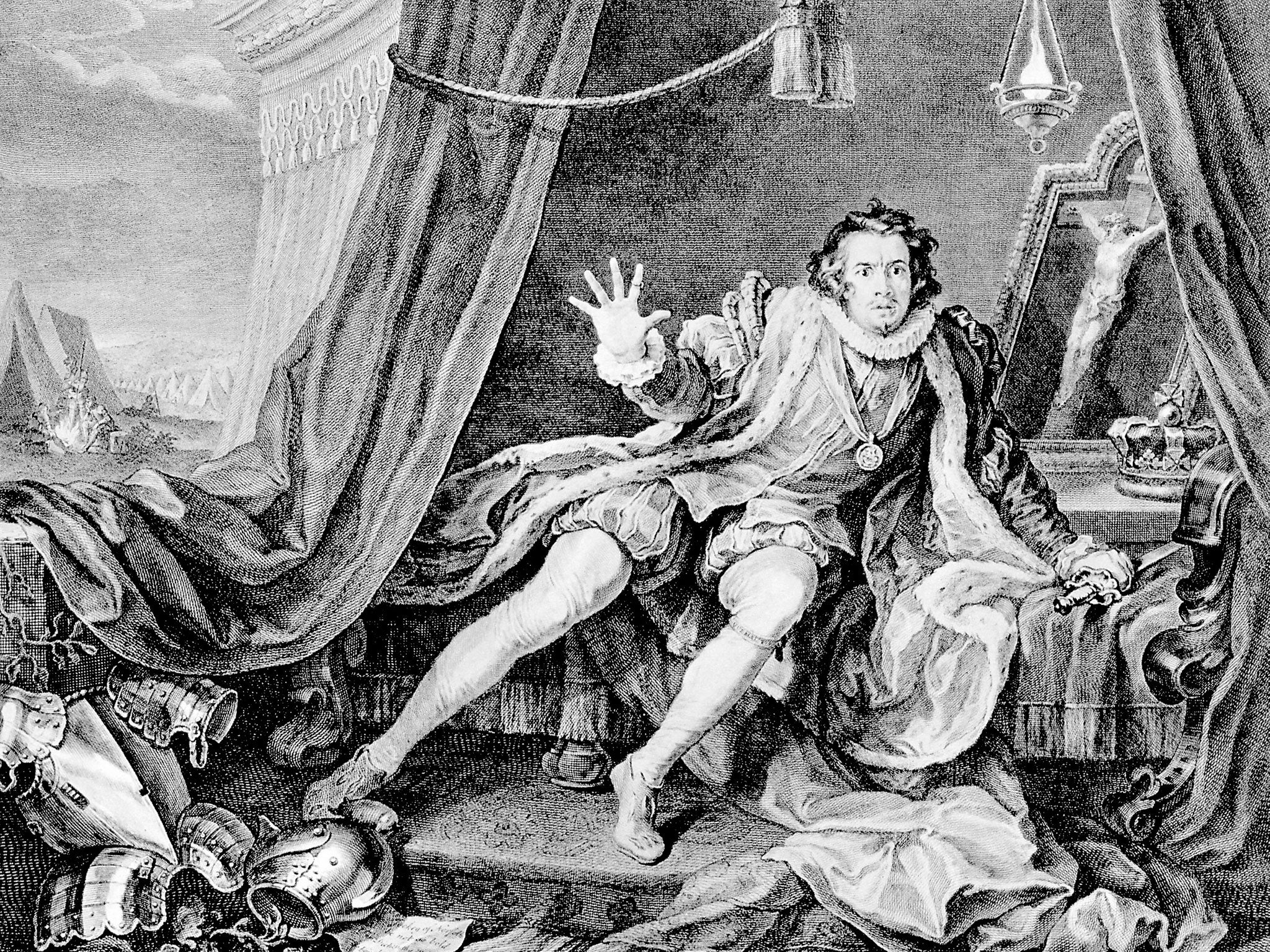Great Shakespeare Actors: Burbage to Branagh by Stanley Wells, book review: Some men and women are merely players
Approaches to performing Shakespeare change with the times, so what makes some interpreters of his roles stand out as the best in history?

Imagine that the opening night audience for John Gielgud's first sensational Hamlet in 1930 at the Old Vic were transported to 1775 and found themselves watching the 56-year-old David Garrick giving London his famous, and by then all-too familiar, Prince of Denmark. Garrick had after all been playing the role for more than three decades.
Star Shakespearian of the 18th and 19th century were revered for their "points" – particular, striking pieces of theatrical business that audiences came to adore. True to this tradition, one of Garrick's great "points" in Hamlet was achieved by way of the mechanical wig on his head which took a starring role of its own. As soon as it heard the words "Look, my lord, it comes!" that preceded the arrival of Hamlet's ghostly father, a shock, a pretty big shock, of Garrick's hair, would duly rise in horror.
The actor's reaction was just as dramatic. He would stagger back a few paces. His knees would collapse. His hands would be stretched out "as high as his head", the right one with the fingers apart. His mouth would yawn wide open. "His whole demeanour is so expressive of terror that it made my flesh creep," one frightened but appreciative spectator wrote.
Garrick was regarded at the time as a fairly naturalistic actor, who discarded what Stanley Wells describes as an "ossified" form of "declamatory mannerism". The studied, ridiculous nature of this fixed "point" in Garrick's armoury would have left the time-travelling 1930 audience derisive. It compares interestingly with the rehearsal angst of the young Gielgud. He had already seen, or been influenced by, about a dozen Hamlets. He had admired John Barrymore's Prince. He'd been eager to follow Henry Irving's business in several scenes. Before the first night, however, he realised he had to find Hamlet's emotional truth by looking inwards and avoiding artifice. "Well unless I am myself with all my own faults and my hates of myself they won't be interested ... I threw myself into the part like a man learning to swim and I found that the text would hold me up if I sought the truth in it."
I compare Gielgud's approach to Hamlet and Garrick's to give an example of the way in which the interpretative styles and manners of great Shakespeare actors have radically transformed and developed since the 18th century, while an awareness and appreciation of those ancient performances was not lost upon their successors.
Wells, an indefatigable Shakespeare scholar and theatre-goer, now in his mid eighties, here takes a brisk, fascinating theatrical voyage through more than four centuries, to capture the lives and glorious playing times of almost 40 famous, mainly British actors, from first Elizabethan Richard Burbage to second Elizabethan Kenneth Branagh, with important stopping off points to take on the dazzling likes of Macready, Kean, Ellen Terry, Edith Evans and his ideal great Shakespearian, Laurence Olivier. Wells's short chapters on his present-day or recent great Shakespeare actors read more like dutiful obituaries than inspired assessments. It is the distant heroic players that bring out the best in him and them.
When brooding over the qualities of great Shakespeare actors, Wells refers us to not very helpful obvious things: physical presence, eyes, facial expressions, vocal prowess to encompass the iambic line. Wells suitably offers Coleridge's famous observation on Edmund Kean – "To see him act is like reading Shakespeare by flashes of lightning" – to show how some actors can illuminate a character with the dazzle of revelatory insights, or can summon up passions of which you feel you've never seen the special like. Theirs is the mysterious charisma of stage magic: Olivier's literally spectacular Coriolanus and Richard III, or Peggy Ashcroft's astonishing performance in the RSC's Wars of the Roses where she took Margaret of Anjou from sexy ingénue to cursing old crone in the course of a day-long performance.
Until the book reaches the 20th century and Edith Evans, who spoke Shakespeare as if he were her contemporary, Wells interestingly charts the changing styles of performance, ranging from artificial declamatory modes to naturalism's arrival and the emergence of the director as the power behind a production. He deftly counterpoints lives on stage and behind the scenes as well: alcoholic Kean, consumed by drink, sex and scandal goes missing one night, returns, collapses in a chair and wakes up demanding "I must have a fuck." It's a sentiment which would have appealed to 18th-century Dora Jordan, famous for her role in All's Well that Ends Well. She lived for 20 years with the future William IV. In between theatre performances she bore him 10 children and bequeathed us such distinguished descendants as one David Cameron. Wells's great Shakespeare actors of the past, he implicitly reminds us, are umbilically linked to our times in more ways than one.
Join our commenting forum
Join thought-provoking conversations, follow other Independent readers and see their replies
Comments